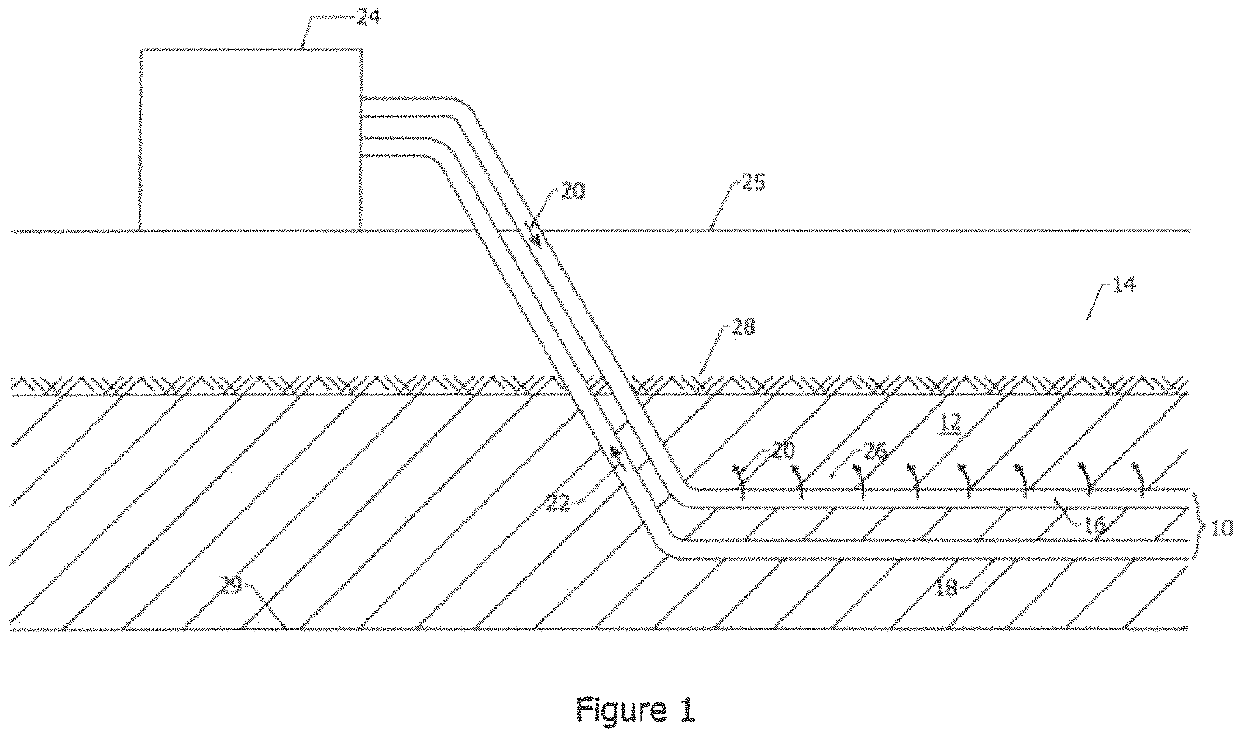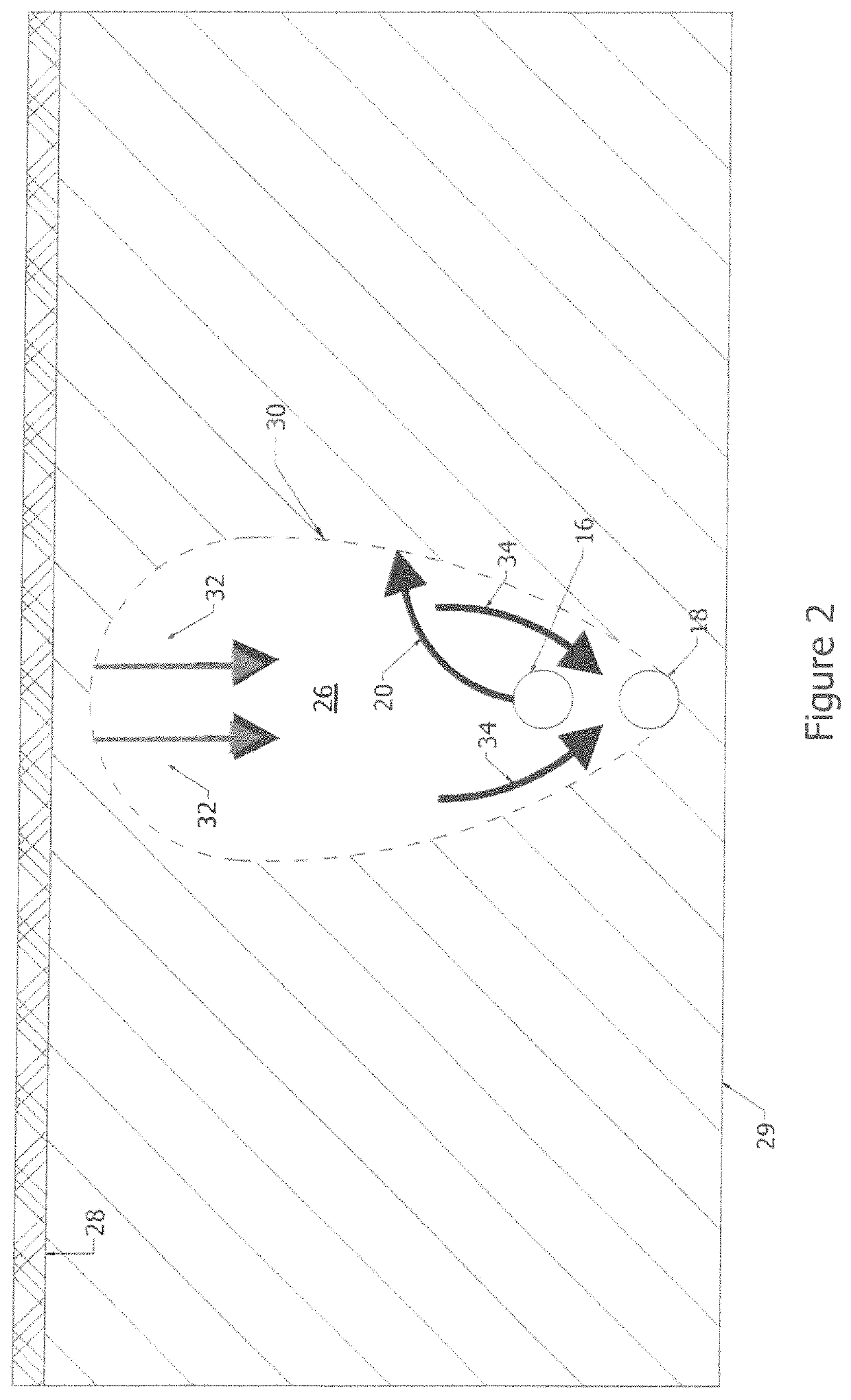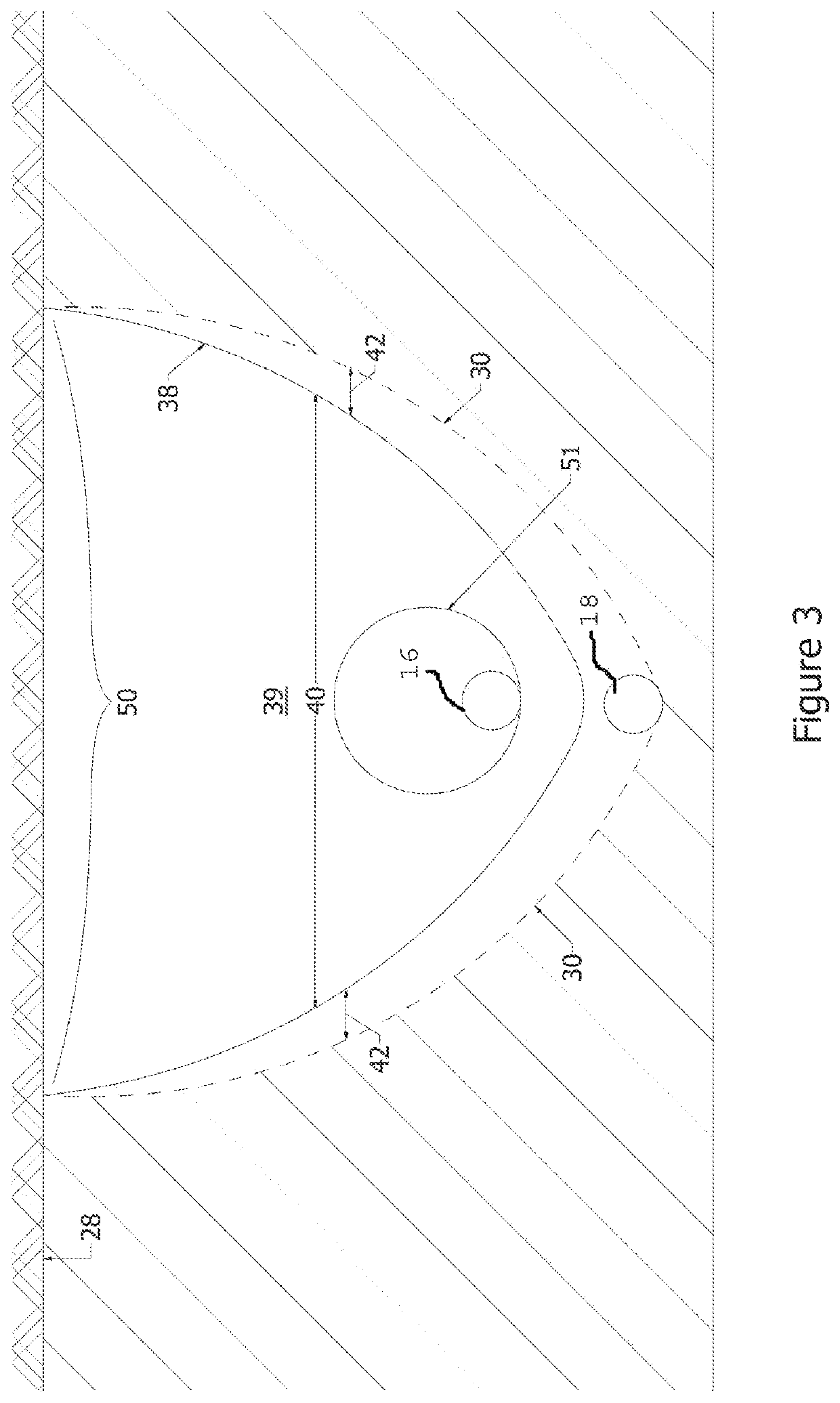Methods of managing solvent inventory in a gravity drainage extraction chamber
a gravity drainage and extraction chamber technology, applied in the field of hydrocarbon extraction, can solve the problems of reducing the amount of liquid solvent in the chamber that is not being productive, affecting drainage fluids by elevated temperature, and reducing the volume used in the nsolv® condensing solvent process, so as to reduce the amount of liquid solvent, reduce operating and capital costs, and reduce the solvent to oil ratio
- Summary
- Abstract
- Description
- Claims
- Application Information
AI Technical Summary
Benefits of technology
Problems solved by technology
Method used
Image
Examples
Embodiment Construction
[0048]As shown in FIG. 1, the underground facilities may consist of one or more horizontal well pairs 10 located in a pay zone 12 of an underground formation 14, with the upper well 16 of the well pair being an injector well and the lower well 18 being a production well. A condensing solvent 20 is placed into the formation 14 through the injection well 16. Although many solvents 20 are comprehended by the present invention, butane may be used as an example for the solvent, since it has a reasonable condensing temperature at a reasonable pressure for a shallow, but not untypical pay zone in the Alberta oil sands, such as the MacKay River deposit. Propane, ethane, pentane, dimethyl ether, H2S, ammonia, COS, other light ethers, light aromatics and the like may also be suitable solvents in some cases. Any solvent that is compatible with the Nsolv® process is suitable for this invention as well. Mixed production fluids 22 are brought up from the production well 18 to a surface plant 24, ...
PUM
 Login to View More
Login to View More Abstract
Description
Claims
Application Information
 Login to View More
Login to View More - R&D
- Intellectual Property
- Life Sciences
- Materials
- Tech Scout
- Unparalleled Data Quality
- Higher Quality Content
- 60% Fewer Hallucinations
Browse by: Latest US Patents, China's latest patents, Technical Efficacy Thesaurus, Application Domain, Technology Topic, Popular Technical Reports.
© 2025 PatSnap. All rights reserved.Legal|Privacy policy|Modern Slavery Act Transparency Statement|Sitemap|About US| Contact US: help@patsnap.com



